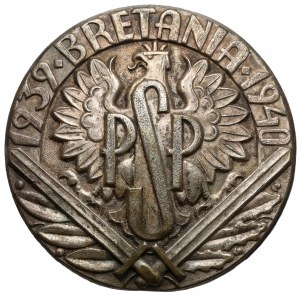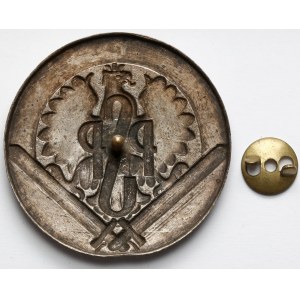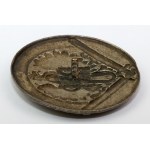Graduation badge of the Infantry Cadet School in Coëtquidan, France.
The school held only two courses. The first began as early as October 5, 1939 and ended on April 12, 1940. The second course lasted from April 15 to June 17, 1940. After this date, the school commanded by Lt. Col. Bronislaw Chru¶ciel was evacuated to Great Britain.
The future officers had to face difficult conditions during their studies. From the memoirs of graduates, it appears that for those for whom there was not enough room in the local school, improvised accommodations were prepared in stables and barns, "where kind cows warmed our frozen bodies with their breaths." Soldiers were in fact not issued blankets and were forced to sleep "with their legs in the sleeves of their coats." Similarly, grenade throwing was practiced with the help of stones In total, both courses of the Cadet School in Coëtquidan were completed by 6 companies, or about 700 cadets.
Their composition was very diverse. Among the trainees were September escapees from Poland, pre-September emigrants, or Polish diplomats. Their age also varied greatly. They ranged from young men who had interrupted their education in the cadet corps to the director of the Wedel factory or Polish ambassador to Berlin Józef Lipski. The most famous graduate was Ksawery Pruszyński. A distinctive feature of the school's graduates was that most of them already had civilian higher education.
You can read more about the school itself in: R.Ch. Gallera, Anthology of PSZ Officer Cadet Schools in the West during World War II, London 2002, pp. 10-22.
One-piece badge, minted with countermark in silver tombac, made by Delande.
51 mm in diameter.
Anonymous nut, 13 mm in diameter, well fitted to the post.
From the middle of the post, uneven threading, making the nut turn at an angle.












